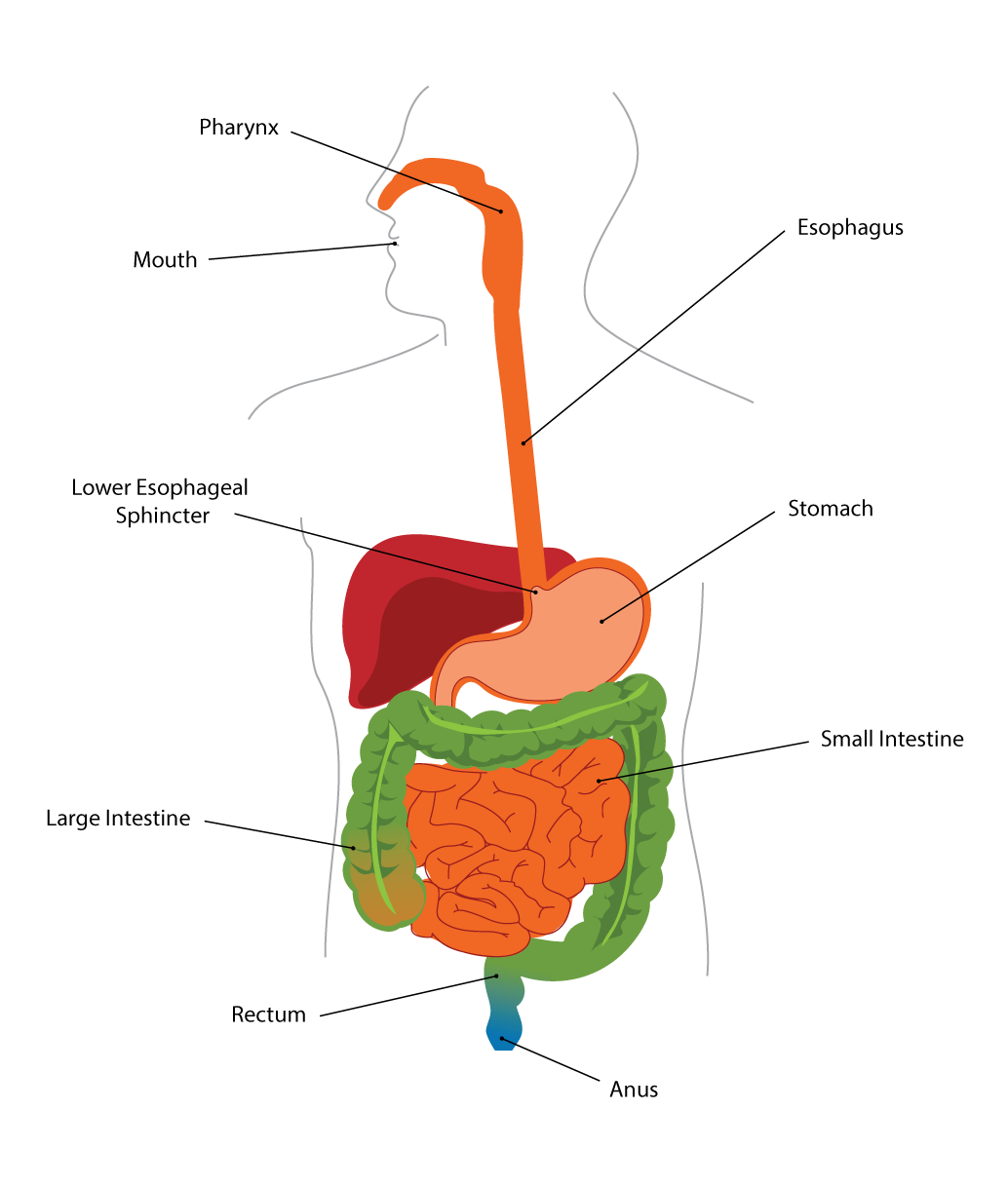When most people think of their digestive systems, their first thoughts usually go to foods that make their stomachs happy. And while the stomach is an integral part of the digestive tract, it’s far from the only piece worth knowing about.
Here at the Colorectal Clinic of Tampa Bay, we focus mainly on the lower digestive tract, but the entire system is important in sustaining our bodies and keeping us alive and healthy.
This organ system is extremely important, and its proper function is paramount to a patient’s overall health. Let’s take a look at the different parts of the digestive system and what roles they play in digestion.
Parts Of The Upper Digestive Tract:
Mouth
This is where food and drinks begin their journey through the system. Digestion actually begins as soon as it enters the mouth; chewing with your teeth breaks food into smaller pieces, and saliva begins breaking down complex carbohydrates into simpler sugars.
Pharynx
The pharynx is probably one the lesser known pieces of the digestive system. In your neck, there are two separate “pipes” that converge at the pharynx. This section of your throat is responsible for directing food and drinks into the esophagus rather than into your lungs, keeping your food and your air separate. Each time you swallow, a bolus is directed by your pharynx into the esophagus.
Esophagus
Around eight inches long, the esophagus is a long, muscular tube that connects your pharynx to your stomach. The esophagus produces muscular contractions in a downward direction to help direct the movement of a food bolus into the stomach. When these contractions misfire or are inconsistent, some people experience dysphagia.
Lower Esophageal Sphincter
At the connection between the esophagus and stomach, there is a small, muscular opening that can close to prevent the backflow of acid into the esophagus. In some patients, this sphincter can become weakened, causing heartburn and GERD.
Stomach
While no segment of the digestive system is more important than another, the stomach plays a huge role in digestion. This organ uses high acidity to turn food boluses into chyme一 a liquid food substance that can be further digested in the next segment of the digestive system.
Small Intestine
Broken down into three parts (duodenum, jejunum, and ileum), the small intestine is the twenty-two-foot-long portion of the digestive system that is responsible for extracting vital nutrients from the chyme. As nutrients are extracted through tiny villi, they enter the bloodstream directly. The pancreas and gallbladder are also critical organs that tie into the duodenum; they contribute enzymes and the means to break down complex fats in the food we eat.
Parts That We Address At The Colorectal Clinic of Tampa Bay:
Large Intestine
Also known as the colon, the large intestine is an organ that finishes up the digestive process. Measuring about five feet long, this tube’s main purpose is to extract any remaining liquid from the debris entering it. Contrary to popular belief, digestion doesn’t stop as the remaining undigested food enters the colon.
In fact, the large intestine is where the majority of your beneficial gut flora live. Even though your body can no longer extract any more nutrients, the bacteria in the colon are now starting to get to work. This is where gas is created; a healthy large intestine has many beneficial bacteria that will break down fiber and release vitamins like B and K.
Rectum and Anus
This portion of the colon is responsible for storing feces for excretion. The rectum is about five to six inches long; as it expands, stretch receptors are activated that signal a bowel movement.
The last few centimeters of the rectum connect to the outside of the body at the anal sphincter. This area is the last stop for food on its way through the body. After excretion, the journey is over!
Colorectal Experts In Tampa
Here at the Colorectal Clinic of Tampa Bay, we offer many colorectal services, focusing mainly on the colon, rectum, and anus. If you are experiencing any of these colorectal symptoms, it may be time to schedule a consultation with our colorectal specialists here in Tampa Bay.



